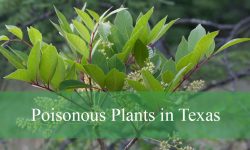Pine trees in Michigan are a familiar sight across the state’s diverse landscapes, from the sandy plains of the Lower Peninsula to the dense forests of the Upper Peninsula. These evergreens provide year-round greenery, essential habitat for wildlife, and valuable resources for the state’s forestry industry. Many of them grow tall and straight, forming the backbone of Michigan’s iconic forested scenery.
There are both native and introduced pine trees in Michigan, each with distinct characteristics that make them easy to recognize. From the soft, five-needle clusters of the Eastern White Pine to the twisted, fire-adapted branches of the Jack Pine, each species has adapted to specific soil types, moisture levels, and sunlight conditions. Some are well-suited for landscaping, while others dominate wild forest habitats.
This article introduces 7 types of pine trees in Michigan, complete with pictures and identification tips. These descriptions highlight key features such as bark texture, needle arrangement, and typical growing environments, helping readers identify pine trees they see across parks, woodlands, and even residential areas.
Common Pine Trees in Michigan
Eastern White Pine (Pinus strobus)

The Eastern White Pine is Michigan’s official state tree and one of the most iconic evergreens in the region. It stands out with its tall, straight trunk and symmetrical shape, often developing a narrow, pyramidal crown in its youth that becomes more irregular and picturesque with age. Its soft, flexible needles are bluish-green and grow in bundles of five, which helps differentiate it from other pine species. The bark on young trees is smooth and greenish-brown, turning gray and furrowed as the tree matures. Its overall appearance is stately and graceful, making it a dominant presence in many northern landscapes.
This pine is a fast grower, especially in ideal conditions. It can grow more than two feet per year when young and reach towering heights of over 100 feet, with some individuals recorded at nearly 200 feet tall. Eastern White Pines can live for several centuries, and their massive size and longevity make them important both ecologically and historically. Mature trees have a trunk diameter that can exceed three feet, and their canopy provides valuable shade and cover for forest wildlife.
Eastern White Pines prefer moist, well-drained soils but are adaptable to various conditions. They thrive in acidic loams and are often found in upland forests, river valleys, and old fields transitioning back to forest. The tree requires full to partial sun to flourish and develops a deep root system that helps it withstand strong winds. Because of its adaptability, it is often used in reforestation projects, especially in areas recovering from logging or agricultural use.
In Michigan, Eastern White Pines are most commonly found in the northern Lower Peninsula and throughout the Upper Peninsula. They are a key component of northern hardwood and mixed conifer forests, often growing alongside species like red maple, sugar maple, and hemlock. You can spot them in state parks, natural reserves, and along many of Michigan’s scenic byways. Their majestic appearance makes them a favorite among nature enthusiasts, photographers, and foresters alike.
Red Pine (Pinus resinosa)
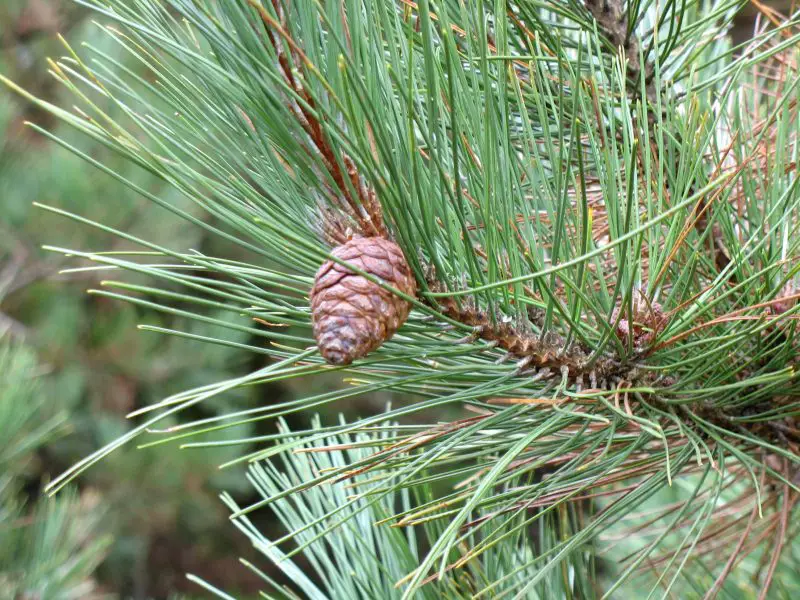
The Red Pine, also known as Norway Pine, is another tall and straight-growing conifer native to Michigan. It has a more rigid and formal appearance than the Eastern White Pine, with stout, dark green needles grouped in bundles of two. These needles are long, often reaching 4–6 inches, and feel stiff to the touch. One of its most distinguishing features is its bark—reddish-orange and flaky on the upper trunk, giving the tree its common name. Its crown is more oval and compact than that of the white pine, with branches that tend to grow in tight, whorled layers.
This species grows at a moderate to fast rate and can reach heights between 60 and 100 feet under favorable conditions. The trunk is typically straight and unbranched for much of its length, making it ideal for timber production. Red Pine is long-lived and maintains a consistent form throughout its lifespan, which can exceed 200 years. Because of its tall, columnar growth and uniformity, it is commonly planted in rows in reforestation and commercial logging operations.
Red Pine thrives in dry, sandy soils that are well-drained and slightly acidic. It prefers full sun and does not tolerate shade well, which is why it’s often found in open areas or planted in clearings. The species is drought-resistant once established and less susceptible to pests and diseases than many other pines. It’s a common sight in pine barrens, old fields, and upland forests where conditions favor its growth and regeneration.
In Michigan, Red Pine is particularly abundant in the Upper Peninsula and northern parts of the Lower Peninsula. It’s commonly found in state and national forests, where it has been widely planted in the 20th century as part of reforestation and fire recovery efforts. You can also find it growing naturally in sandy plains and glacial outwash areas. Its durability, beauty, and ecological importance make it a key species in Michigan’s pine-dominated ecosystems.
Jack Pine (Pinus banksiana)

Jack Pine is one of the hardiest and most fire-adapted pine trees found in Michigan. Unlike its taller cousins, the Jack Pine often appears scraggly and irregular in form, with a crooked trunk and twisted branches. It has short, yellowish-green needles in bundles of two that are sharply pointed and curve slightly. Its cones are small, tightly closed, and uniquely adapted to open only under the heat of fire—a trait known as serotiny. This feature allows the Jack Pine to regenerate quickly after wildfires, making it an essential species in fire-prone environments.
Although smaller in stature, Jack Pines are fast growers and can reach 30 to 70 feet in height. Their growth rate slows with age, and their lifespan typically ranges from 60 to 100 years. Because of their irregular form and short needles, they are less commonly used for ornamental planting but are crucial for ecological restoration and wildlife habitat. The trees often have multiple stems or leaning trunks, giving thickets of Jack Pine a dense, wild appearance.
Jack Pines thrive in harsh, sandy, and nutrient-poor soils where few other trees can survive. They are extremely tolerant of dry conditions and full sun, which makes them ideal pioneers in disturbed or recently burned areas. Their deep root systems anchor them well in loose, sandy substrates, and their ability to reproduce following fire makes them a foundation species in fire-dependent habitats. Jack Pine forests are often open and scrubby, with a ground layer of grasses, lichens, and low shrubs.
In Michigan, Jack Pine is widespread in the northern Lower Peninsula and parts of the eastern Upper Peninsula. It is especially common in places like the Huron National Forest and areas of Kalkaska and Oscoda counties. These pine barrens are also the exclusive breeding grounds of the endangered Kirtland’s Warbler, a rare songbird that nests only in young Jack Pine stands. For this reason, the management of Jack Pine habitat is a high conservation priority in Michigan.
Scots Pine (Pinus sylvestris)

The Scots Pine, originally native to Europe and parts of Asia, is a non-native pine that has become a familiar sight in parts of Michigan. It is easily recognized by its distinctive orange-brown bark, which peels in thin flakes and becomes more pronounced near the upper sections of the trunk. The tree features stiff, blue-green needles in bundles of two, each about 1.5 to 3 inches long. Its crown is often irregular and flat-topped in maturity, and younger trees tend to have a more symmetrical, conical shape.
This species grows at a moderate pace and can reach heights between 40 and 70 feet, although under ideal conditions it can grow taller. Scots Pine develops a straight trunk and strong wood, which historically made it a valuable timber tree in its native range. In Michigan, its growth habits and manageable size have made it a popular choice for Christmas tree farms, windbreaks, and reforestation projects, especially in earlier decades. The tree’s blue-green foliage remains attractive through the winter months, adding year-round visual interest.
Scots Pine adapts well to a wide range of soils but prefers well-drained, sandy locations. It tolerates drought and cold temperatures but does best in full sun. Despite its usefulness, the species can become invasive in certain natural areas where it escapes cultivation, outcompeting native flora. Its ability to spread and form dense stands in the wild has led to increased management in some public lands where preserving native ecosystems is a priority.
In Michigan, Scots Pine is most often found in plantations and scattered across rural landscapes, particularly in the northern and central Lower Peninsula. It is occasionally found growing wild in disturbed or abandoned agricultural fields. Though not native, it has been a part of Michigan’s forestry and agricultural scenes for decades, and its easily identifiable bark and needles make it a recognizable tree across the region.
Austrian Pine (Pinus nigra)
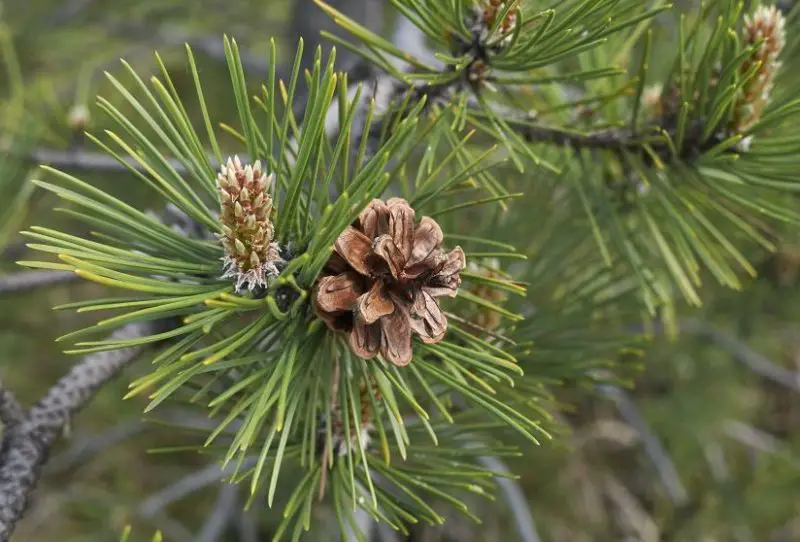
The Austrian Pine, or Pinus nigra, is a robust and attractive pine species native to central and southern Europe. Introduced to Michigan for ornamental purposes, it features long, dark green needles in pairs, each reaching up to 6 inches. These needles are stiff and sharp, lending a dense and bold texture to the tree’s symmetrical crown. Its bark is dark gray to black on older trunks and becomes plated and rugged with age, contrasting nicely with the tree’s vibrant foliage.
This pine typically grows to heights between 50 and 60 feet and maintains a dense, upright form throughout its life. It has a moderate growth rate and is prized in landscaping for its ability to withstand a variety of stresses, including wind, air pollution, and salt spray. Due to its resilience, it is frequently planted in urban and suburban settings, especially in parks, campuses, and along roadways. While not native, it contributes a strong structural element to designed landscapes.
Austrian Pine is highly adaptable to poor and compacted soils, and it does not require rich nutrients to thrive. It performs best in full sun and is relatively drought-tolerant once established. However, it can be susceptible to fungal diseases such as Diplodia tip blight, especially in humid conditions or where air circulation is poor. Regular maintenance and thoughtful placement can help mitigate disease issues in ornamental plantings.
In Michigan, the Austrian Pine is most commonly found in southern counties where urban development is more extensive. Cities such as Ann Arbor, Lansing, and suburban Detroit often feature these trees in public spaces and older landscape designs. Though it is less commonly planted now due to disease concerns, many mature specimens still dot Michigan’s landscape, offering both shade and evergreen color throughout the year.
Ponderosa Pine (Pinus ponderosa)
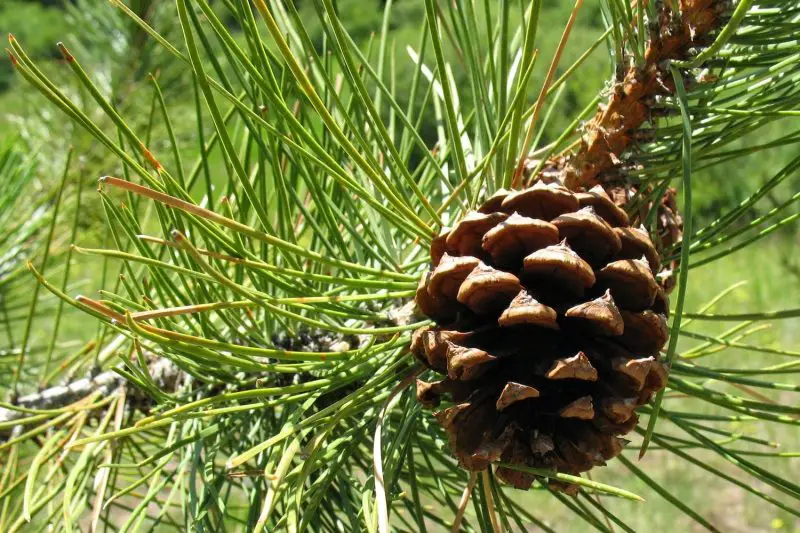
Ponderosa Pine is a majestic western species that is rarely seen in Michigan but occasionally planted for ornamental, research, or educational purposes. It is best known for its long, slender needles grouped in bundles of three, and its large, straight trunk with orange to cinnamon-colored bark that smells faintly of vanilla or butterscotch. The crown is typically open and irregular, especially in mature trees, giving the tree a rugged and picturesque form.
This tree grows quite large, often reaching heights of 60 to 100 feet or more, though it tends to remain smaller in Michigan due to climate limitations. Ponderosa Pine is a moderate to fast grower and can live for several centuries under ideal conditions. Its strong wood and beautiful appearance make it popular in the western United States, and though it’s not well suited to all parts of Michigan, it is still used selectively in certain managed landscapes.
Ponderosa Pine thrives in dry, well-drained soils and requires full sun. It does not tolerate poorly drained or heavy clay soils and is sensitive to excessive moisture and humidity, which are more common in Michigan’s climate than in its native range. As such, it is best planted in specially prepared locations or in protected arboretum settings where conditions can be more carefully controlled.
In Michigan, this species can be found in specialized environments such as university botanical gardens, arboreta, or private collections. Some forestry research plots and demonstration forests may also contain small stands for educational purposes. While it will never become a widespread tree in the state, the Ponderosa Pine remains a curiosity and a teaching tool for students of forestry and horticulture.
Shortleaf Pine (Pinus echinata)
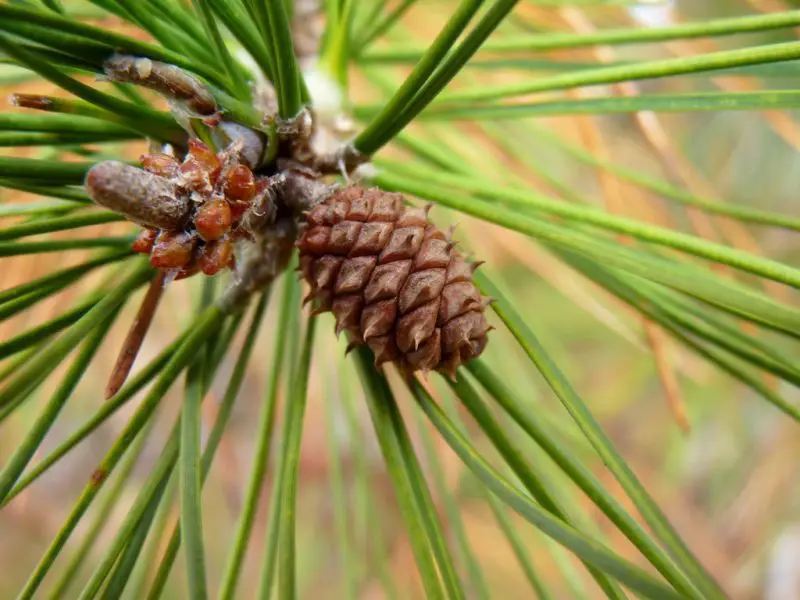
The Shortleaf Pine is a medium-sized pine native to the southeastern United States, and only rarely found in Michigan, usually as part of managed forest plots or arboretums. It features slender, flexible needles that grow in bundles of two or three, each about 3 to 5 inches long. The tree’s cones are small and armed with short prickles, and its bark is thin, scaly, and dark brown, often broken into rectangular plates on older trees. It has a relatively open crown and a straight trunk, contributing to a graceful silhouette.
This species can grow to heights of 50 to 100 feet, with a moderate growth rate. It is valued for its durable wood and ability to regenerate both from seed and from sprouts after fire or injury. Although it’s more commonly used in reforestation in the southern U.S., in Michigan, it’s primarily planted in academic or research contexts. Its lifespan can reach over 150 years in ideal conditions, and it tends to maintain a uniform shape with age.
Shortleaf Pine prefers dry to moist, well-drained soils and can grow in sandy or rocky conditions. It is adaptable to both upland ridges and bottomlands but requires full sun to establish and flourish. Like some other southern pines, it has a degree of fire resistance, particularly when mature, and its ability to sprout from roots gives it a unique regenerative advantage not shared by most other pines.
In Michigan, the Shortleaf Pine is uncommon and generally restricted to southern parts of the state. You might encounter it in university forest plots, government-run arboreta, or private plantings intended to test its adaptability. Though it is not a major component of Michigan’s natural forests, it remains an interesting and occasionally used species in forestry education and experimental planting efforts.
How to Grow and Care for Pine Trees in Michigan
Growing pine trees in Michigan is relatively straightforward, thanks to the state’s compatible climate and wide variety of soil types. Most pine species prefer full sun and well-drained soils, with sandy or loamy textures being ideal for healthy root development. Before planting, it’s important to choose the right species based on your region—some pines, like Eastern White Pine, thrive in northern forests, while others, such as Austrian or Scots Pine, perform better in the southern part of the state or in urban landscapes.
When planting pine trees, dig a hole twice as wide as the root ball and just as deep. Avoid planting too deeply, as this can lead to root rot in Michigan’s wetter soils. After planting, water thoroughly and apply mulch around the base to retain moisture and suppress weeds. Pines establish best when planted in early spring or fall, giving roots time to grow before summer heat or winter freezes set in.
Caring for pine trees involves minimal maintenance once they are established. Regular watering during the first couple of years is essential, especially in dry periods. Fertilization is usually not necessary if the soil is healthy, but light feeding in early spring can promote faster growth in young trees. Pruning should be limited to removing dead or damaged branches and is best done in late winter or early spring before new growth begins.
In Michigan, it’s also important to monitor pine trees for common issues like Diplodia tip blight, pine wilt, and pest infestations from sawflies or bark beetles. Choosing disease-resistant species, ensuring good air circulation, and avoiding excessive moisture at the base can help prevent these problems. With proper care and attention, pine trees can grow tall and healthy, adding beauty and ecological value to Michigan’s landscapes for generations.

